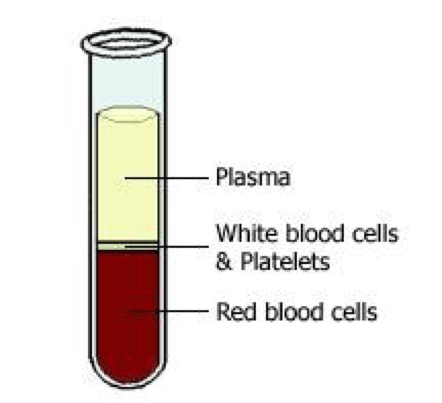Editor’s note: Approx 125kg of sanitary waste is generated per person during their menstruating years and these sanitary napkins can take 500-800 years to break down! #ThePadEffect is a campaign to advocate for sustainable menstruation and prevent thousands of tons of sanitary waste.
We as a species are yet to unravel the necessity to menstruate (and in turn procreate) as we do, as often as we do, and for as long as we do. This indeed is a difficult conundrum to deal with by menstruators and scientists alike!
A lot of what we presume is dictated by lived experiences combined with inherent worldly biases we may have inherited by virtue of our position in the pyramid of privileges. One such presumption that bears constancy is what constitutes menstrual discharge and its connotations to being impure and dirty.
Let us begin with the most accepted understanding of volume of discharge flow during the menstrual phase of our menstrual cycle. An accepted average largely falls under the range of 50-60 ml, but may vary from 10 ml -100 ml, further determined by the method of contraception used or not.
What does this 50-60 ml of discharge contain predominantly?
- Blood
- Endometrial fluid
- Endometrial tissue
- Cervical and Vaginal Mucosa
- Microbes from the Vagina
Let us go into a finer understanding of the above.
Blood is only a small proportion of menstrual discharge
The proportion of blood out of the total fluid loss is similar on different days of menstruation and with those with different total menstrual discharge volumes. Quantitatively, the same study (Fraser, McCarron, Markham, & Resta, 1985) pegs that menstrual hemoglobin concentration is at 35% of venous (the blood in our veins) concentrations ranging between 4-5mg/100 ml. The following figure helps us understand that when blood is left to stand, it separates into the layers with 60% plasma and 40% WBC’s and RBC’s (Bethesda, 2005)

Where does this blood component come from? The endometrial lining is made of a layer of cells that is supplied with blood by spiral arteries that determine the thickness of the lining by a complex hormonal pathway. During the menstrual phase of the cycle, the hormonal play cuts off the arterial supply, leading to death of the endometrial tissue and in turn bleeding of the accrued blood in the connective tissue.
The Blood component in menstrual discharge is the same as arterial blood.
Despite blood not being the only component in menstrual discharge one experiences it as a predominant component by virtue of the redness and metallic odour that any menstruating person experiences. On engaging with over 1000 menstruators, I can say with confidence, very few understand the true nature, quantum, variations and potential signs that menstrual discharge is constantly showing and signaling to menstruators.
What does this mean to a lay person? However, the manner in which menstruators experience this and the manifestation of period bleeding on sanitary pads/tampons/menstrual cups/cloth is not in congruence with this fact. Further, loss of menstrual fluid by itself cannot fatigue a menstruator in relation to low Red Blood Cell count, unless there is a pre-existing condition like anemia which could be a symptom by itself to other diseases. And the theory surrounding debilitation during menses is a conflicted discourse by itself!
Tissue and more water and electrolytes that we think in menstrual discharge
Logically then, the menstrual discharge ought to be made of more fluid emanating from the endometrium, cervix or vagina itself, in the natural order of flow. As mentioned above, as the hormonal play offs cut of arterial supply to the endometrial lining, the tissue dies (by virtue of being cut off from blood supply) and is now part of menstrual discharge. Does the dying tissue then mean anything in relation to impurity, is something we have little scholarship to address.
In essence, the blood from the endometrial lining, along with stromal/tissues of endometrium combined with secretions of the endometrial glands, is what now constitutes menstrual discharge. This is further added on by a less significant in quantum, a contribution of cervical and vaginal secretions. The vaginal fluid has a distinct ionic nature, helping the low pH status as well as growth of lactobacillus in producing lactic acid that helps non-resident bacterium (particularly e.coli from thriving). In essence it has an active anti-microbial activity (Valore, Park, Igreti, & Ganz, 2002).
The following table is a consolidation of information from the book (Farage A & Maibach I, 2006)
| DESCRIPTION | VENOUS BLOOD | MENSTRUAL DISCHARGE |
| Concentration of elements of solid mass | Higher | Lower |
| Heamoglobin content | Higher | 35% of venous blood |
| White blood cell and platelet | High | 100 fold lower than venous blood |
| Clotting factors | Blood tissue agglomerator proteins present | Absent but presence of metalloproteinases that catalyze endometrial breakdown |
| pH indicating serum content of fluid | 7.2 | 7.2 with median range of pH 5-6 |
| Viscosity: Note varies across dramatically depending on menstrual flow | Similar to menstrual discharge when menstrual flow is greatest | Considerably more viscous than venous blood or water, specifically 4 times more viscous than venous blood and 35 times as viscous as water |
| Stem Cells | Absent | Pluripotent stem cells present that can be harvested for literally any purpose |
| Ovum/Egg | Absent | Duh! |
Looking at the table above, we understand there is no specific component of menstrual discharge that potentially looks as toxic/a contagion or impure. As is with all biological fluids, menstrual discharge obviously has its own ways of being treated and discarded.
As a reductionist enquiry, how does one, menstruator or not, deal with normal (venous/arterial blood) versus menstrual discharge/blood. One would, maybe, without a seconds’ thought go to the aid of someone bleeding profusely or otherwise because of an accident or injury, whereas the completely disconcerted response, bordering on insipid ignorance, is what menstrual discharge/staining would elicit.
In yet another reductionist science-based rationalization to menstrual discharge, is the almost cogent explanation that the uterus, its lining, unfertilized eggs are all unwanted and hence viewed as foreign bodies, and in turn impurities (Laws, 1991). If we were to further reduce this scientific rationale, why then does the body not enact its complex inflammatory response and unleash its range of mechanisms to destroy the antigens!
Rather, a feminist perspective bridging the aforementioned dichotomy can help in treating menstrual discharge as is. This has to be read in conjunction with evidence that shows that mainstream menstrual cycle research is subject to the influence of misogynist methodology upheld as staunchly as women influenced by patriarchy as men (Nicolson, 1995).
There are very few studies that have assayed the complete biochemical components of menstrual discharge in statistical significance and this itself is a deterrent in some ways to challenging the existent nature of menstrual discharge being perceived as impure.
Somewhere unless this dichotomy of a lived experience of menstruating is bridged with the scientific knowledge and physiological functioning of menstruation (Kissling, 1991) is addressed and built upon, there will always be room for fear, disregard and juxtaposition of menstrual discharge with other body wastes. Evidence garnered scientifically has to be problematized in the philosophy of science, as a model that represents biomedicine/scientific evidence as politically disinterested (Goldenberg, 2011) or merely scientific should give pause.
In conclusion, there is no evidence to show that menstrual discharge is dirty/impure (which can be translated as toxic or acting as a contagion in causing diseases/illness). If this indeed is the case, where and how did the impurity discourse begin!
References
- Bethesda, L. D. (2005). Blood Groups and Red Cell Antigen.
- Farage A, M., & Maibach I, H. (2006). The Vulva: Anatomy, Physiology and Pathology.
- Fraser, I. S., McCarron, G., Markham, R., & Resta, T. (1985). Blood and Total Fluid Content of Menstrual Blood. Obstetrics & Gynecology.
- Goldenberg, J. M. (2011). On evidence and evidence-based medicine: Lessons from the philosophy of science. Social Science and Medicine.
- Kissling, A. E. (1991). Bleeding out Loud: Communication about menstruation. Feminism and Psychology.
- Laws, S. (1991). Issues of Blood: The Politics of Menstruation.
- Nicolson, P. (1995). The menstrual cycle, science and feminity: Assumptions underlying menstrual cycle research. Social Science and Medicine.
- Valore, V. E., Park, H. C., Igreti, L. S., & Ganz, T. (2002). Antimicrobial components of vaginal fluid. American Journal of Obstetrics and Gynecology.
With inputs from Abdul Rauf Sheikh
Bharti Kannan, is founder at Boondh, an organization striving to make menstrual cups accessible and affordable in India across socio-economic backgrounds. She identifies as a half baked chemical engineer and sustainable menstruator in context.
Featured Image Credit: Cendrine Rovini




